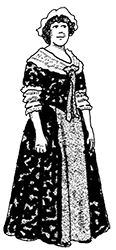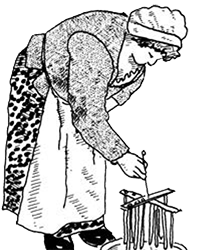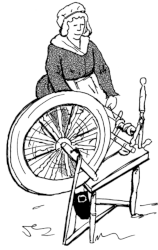Women and Children in the Army
During the American Revolution, it was common for women and children from both sides to follow their husbands into war. This was done by all classes of women from the very wealthy – who just visited their husbands in the field from time to time – to the common, everyday women who had no other means of support and no place else to go.
The British army officially allowed one woman for every six men, or one per tent. The Continental army had similar ratios, but in both armies this quota was often exceeded. They were known as “women on the ration” and received one-half of what ever the army gave a soldier. Useful children received a one-quarter ration. They had jobs in the army, such as mending clothes, taking care of the sick men, doing laundry, and cooking. A few even followed the army out on the battle field to bring water and ammunition to the men.


 Facebook
Facebook